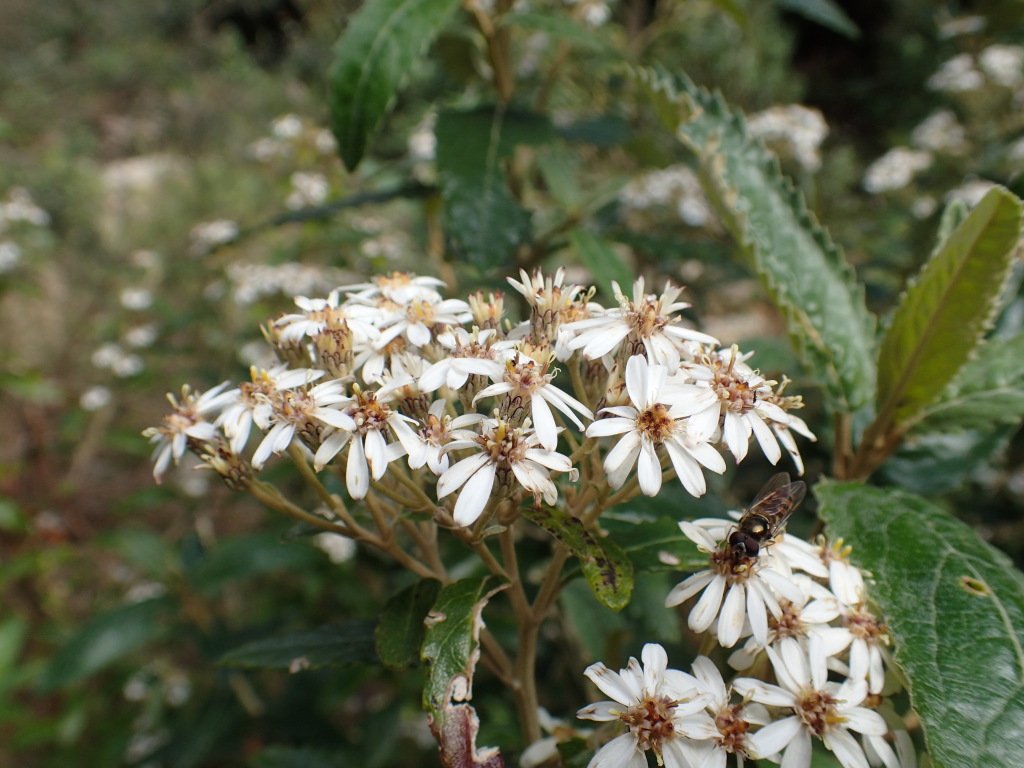Olearia phlogopappa subsp. phlogopappa
Upright to spreading shrub to 1.5 m high. Leaves thick-textured, ovate to lanceolate (in Victoria), 36–70(–90) mm long, 11–23–(30) mm wide; margins deeply lobed; upper surface lime green to dark green, becoming glabrous, sessile glands absent; lower surface yellow, densely stellate-hairy, rarely glandular; petiole 4–8 mm long. Capitula pedunculate, in terminal or subterminal panicles or corymbs. Flowers Oct.–Dec.
WPro, VAlp. Also Tas. Apparently restricted in Victoria to Wilsons Promontory, where growing at relatively high altitudes (c. 300–500 m) in shrubland and open woodland on exposed rocky sites and extending down along gully margins into adjacent open forest.
Previously included in O. stellulata, but with a revision by Messina et al. (2014) concluding that these could be placed in either O. stellulata or O. phlogopappa based on morphological and chemical characters. While noted as atypical for that species, plants had been retained in O. stellulata due to the presence of small tubercles on the upper leaf surface of some plants – a character diagnostic for O. stellulata. The variable presence of tubercles on plants and highly limited distribution gave some suggestion that they might be hybrids between O. rugosa (a strongly tuberculate species) and O. lirata (which lacks tubercles).
The only site sampled by Messina et al. (2014) was a relatively small population on Windy Saddle. Recent, more extensive field studies in this general area at Wilsons Promontory have found several morphologically uniform stands of plants which conform to O. phlogopappa subsp. phlogopappa. Plants have thick-textured leaves which are initially stellate-hairy above but soon glabrous, and have very dense, relatively small, yellow stellate hairs on the lower surface. A common garden experiment using seed collected from two populations has found the above characters to be retained on plants grown in cultivation (A. Messina unpublished data), confirming these characters are stable and are not likely to be the result of recent hybridization. Accordingly, these are now treated as an isolated occurrence of in O. phlogopappa subsp. phlogopappa, which also occurs in a similar habitat on Flinders Island and is widespread in coastal regions of Tasmania.
 Spinning
SpinningMessina, A.; Walsh, N.G.; Hoebee, S.E.; Green, P.T. (2014). A revision of Olearia section Asterotriche (Asteraceae: Asterae). Australian Systematic Botany 27: 199–240.
